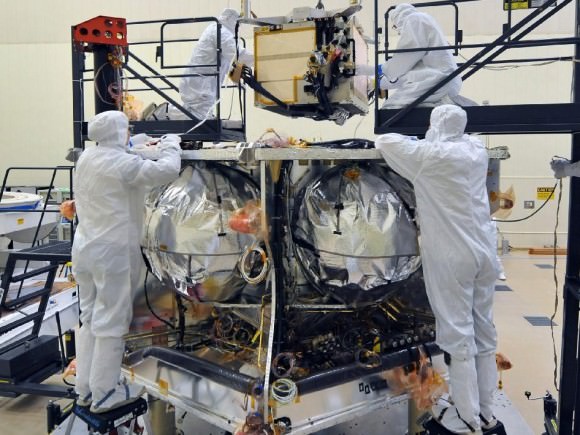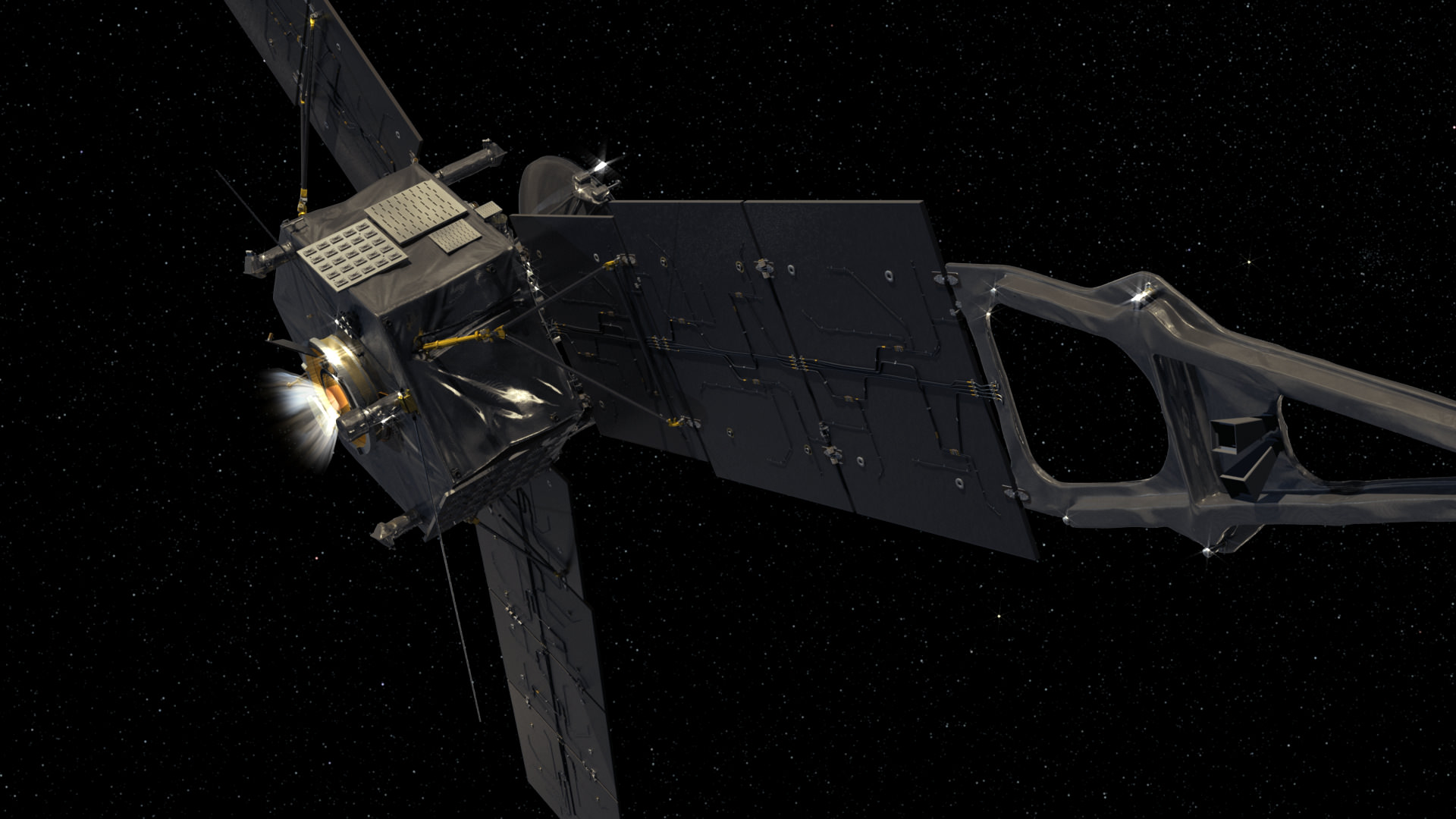Each new probe we launch into space follows a finely-tuned, predetermined trajectory that opens up a new avenue of understanding into our solar system and our universe. The results from each probe shapes the objectives of the next. Each probe is built with maximum science in mind, and is designed to answer crucial questions and build our understanding of astronomy, cosmology, astrophysics, and planetary studies.
The Juno probe is no different. When it arrives at Jupiter in July 2016, it will begin working on a checklist of scientific questions about Jupiter.
But there’s a problem.

Jupiter is enormous. And at it’s heart is a chunk of ice and rock, or so we think. Surrounding that is an enormous region of liquid metallic hydrogen. This core is 10 to 20 times as massive as Earth’s, and it’s rotating. As it rotates, it generates a powerful magnetic field that draws in particles from the sun, then whips them into a near-light-speed frenzy. This whirlwind of radiation devastates anything that gets too close.
Enter the tiny Juno spacecraft, about the size of a bus. Juno has to get close to Jupiter to do its work—within 5,000km (3,100 miles) above the cloud tops—and though it’s designed to weave its way carefully past Jupiter’s most dangerous radiation fields, its orbits will still expose it to the paper-shredder effect of those fields. There’s no way around it.
Juno Project Scientist Steve Levin, and Dave Stevenson from Caltech explain Juno’s orbiting pattern in this short video:
The most vulnerable part of Juno is the sensitive electronics that are the heart and brains of the spacecraft. Jupiter’s extreme radiation would quickly destroy Juno’s sensitive systems, and the Juno designers had to come up with a way to protect those components while Juno does its work. The solution? The titanium vault.

All kinds of materials and methods have been employed to protect spacecraft electronics, but this is the first time that titanium has been tried. Titanium is renowned for its light weight and its strength. It’s used in all kinds of demanding manufacturing applications here on Earth.
The titanium vault won’t protect Juno’s heart forever. In fact, some of the components are not expected to last the length of the mission. The radiation will slowly degrade the titanium, as high velocity particles punch microscopic holes in it. Bit by bit, radiation will perforate the vault, and the electronics within will be exposed. And as the electronic systems stop functioning, one by one, Juno will slowly become brain-dead, before plunging purposefully into Jupiter.
But Juno won’t die in vain. It will answer important questions about Jupiter’s core, atmospheric composition, planetary evolution, magnetosphere, polar auroras, gravitational field, and more. The spacecraft’s onboard camera, the Junocam, also promises to capture stunning images of Jupiter. But beyond all that, Juno—and its titanium vault—will show us how good we are at protecting spacecraft from extreme radiation.
Juno is still over 160 million km (100 million miles) from Jupiter and is fully functional. Once it arrives, it will insert itself into orbit and begin to do its job. How well it can do its job, and for how long, will depend on how effectively the titanium vault shields Juno’s heart.


I can’t wait for Juno to arrive at Jupiter and begin it’s complex observations! This is one of those cases where we will probably learn answers to questions we didn’t know we had, or have yet to ask. Serendipitous discoveries are always an eye opener and no doubt we’ll find them.
Questions I have include: Where and how do the stupendous bolts of lightning we’ve seen originate? What are the intricacies of Jupiter’s interaction with it’s moons? How does Jupiter ‘communicate’ via it’s gigantic magneto tail with Saturn? How does it react to the solar wind? What is the source of the radio waves oft times emitted by Jupiter? Are those waves a reaction to Sol’s influence? etc..
GO JUNO!
Myself, I especially can’t wait to see images of those swirling, psychedelic cloud patterns from a mere 3100 miles away!!
Seems July each year is becoming quite the month for extraordinary cosmic achievement.
Arthur Clarke speculated a diamond the size of the Earth was at the center of Jupiter’s core. Soon we may know the answer about what drives this massive swirling ball of gas.
I’ve seen prominent geologists and mineralogists say that diamonds was the first mineral to ever form after Big Bang, and that soccer ball sized diamonds likely are about deep in the interior of Earth, the large ones just don’t emerge so easily. While white dwarfs are not pure diamonds, they are diamonds to some substantial extent, and they have the size of Earth.
Funny enough, diamonds actually seem to burn at 700 C, that’s less than the tip of a cigarette. I suppose it is different at high pressures, but do make sure your diamonds are covered by the fire insurance.
Juno is a very interesting mission, Jupiter is important for understanding the Solar System, its mas is greater than all other planets summed. And it is great that they put a camera on it so we can see the cloud tops. Galileo crashed into Jupiter, but since its main antenna never unfolded correctly, it had not the capacity to send images from the event.
FarAwayLong Ago, During the French Revolution (before losing His Head) Antoine Lavoisier was the first to burn a Diamond in an experiment, He heated a Diamond in a flask of Pure Oxygen and it burned away to smoke, He then took another Diamond put it in a Vacuum and heated it to the same temperature Nothing Happened, He had demenstrated that Diamonds were Flamable Carbon, He had also also taken steps toward proving that Mass did not disappear when Heated it Simply Combined with Oxygen and blew away as smoke…